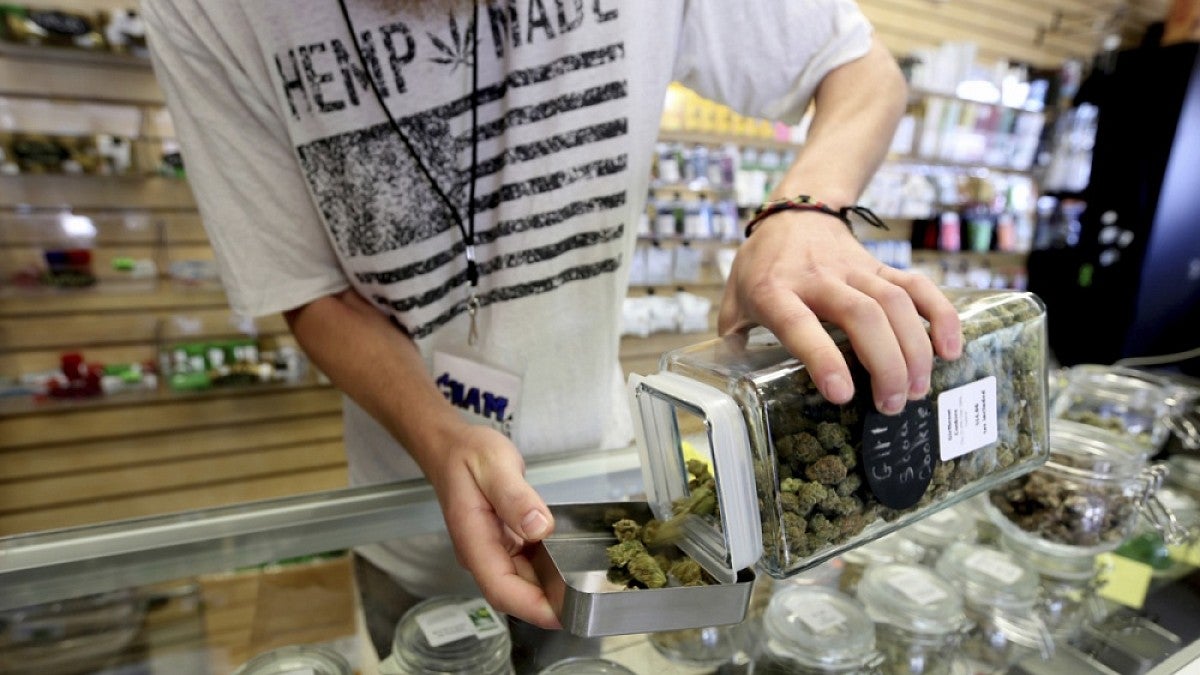When Oregon’s recreational sales of marijuana took effect, retail sales in Washington counties across the Columbia River dropped 41 percent in just three days, UO researchers report.
Also taking a dip was the amount of legally sold marijuana leaving Washington, UO economists Benjamin Hansen, Keaton Miller and Caroline Weber noted in their findings, which were published online this week in the working paper series of the National Bureau of Economic Research.
“We found that the majority of marijuana sold in Washington is actually staying there,” said Hansen, the UO’s W.E. Miner Professor of Economics. “We found that prior to Oregon’s legalization 11.9 percent was potentially being diverted out of Washington overall, and it dropped to 7.5 percent after Oregon’s legalization.”
Washington was one of the first states to legalize recreational marijuana. Its stringent regulatory and tracking requirements from production through sales provided a wealth of data, Weber said.
The UO team studied Washington’s sales for two months before and after Oregon’s legal market opened on Oct. 1, 2015. The research, Weber said, captured a naturally occurring experiment as neighboring states implemented recreational marijuana markets.
While the study suggests that the illegal cross-border movement, or diversion, of legally produced marijuana across state borders is a concern, it is not occurring at alarming levels, Hansen said.
That concern, however, was one reason for the study.
In 2013, then-Deputy Attorney General James M. Cole, in what is known as the Cole Memorandum, advised federal law enforcement officials to monitor cross-border movements of the drug, which under federal law is classified as illegal alongside heroin and methamphetamines. The Trump administration has signaled a possible federal crackdown.
“Our study says that 93 percent of marijuana sold in Washington is probably staying there now,” Hansen said. “There’s probably not a lot you can do about the remaining share that is being diverted at this point. This is just the likely consequence of partial prohibition.”
The study also addressed the potential for randomized traffic searches along state borders to stop cross-border transport of marijuana.
Just before Oregon’s market opened, 1,662 retail sales transactions occurred daily in Washington’s Clark and Klickitat counties, just across the river from Portland. Given that 293,840 vehicles traveled between Oregon and those counties daily in 2015, based on Oregon Department of Transportation records, “a policy of randomly searching border-crossing vehicles could expect to find diverted recreational marijuana in just 0.47 percent of stops,” the UO researchers wrote.
“You might expect larger diversion when states around a legalized one are not allowing recreational or medical market sales,” Hansen said.
The team’s analysis determined that randomized searches along Washington’s Spokane and Whitman counties with Idaho, where marijuana is illegal, might yield illegally transported marijuana at most 4 percent of the time.
Based on the study, Hansen said, California likely faces far less diversion because all neighboring states allow for some form of legal marijuana use. Small amounts of illegal, small-scale trafficking are to be expected as long as the U.S. does not have uniform policies, he said.
In the two months prior to the opening of Oregon’s recreational market, 5,624 kilograms (12,398 pounds) of marijuana were sold in Washington; 670 kilograms (1,477 pounds), or 11.9 percent, went across state lines. Factoring in the drop in sales after Oregon’s legalization and no decline seen elsewhere in Washington implies that only 7.5 percent of sales are illegally leaving Washington today, the research team concluded.
“We’ve been able to study this natural experiment to speak to a question that a lot of people in law enforcement and government care about,” Weber said. “If we had instead found that 60 percent of Washington’s marijuana was being diverted, then it would have suggested a whole different approach to thinking about legalization moving forward.”
People seem to prefer purchasing marijuana in legal recreational markets instead of through the black market or as medical marijuana or growing their own, Hansen said.
—By Jim Barlow, University Communications


